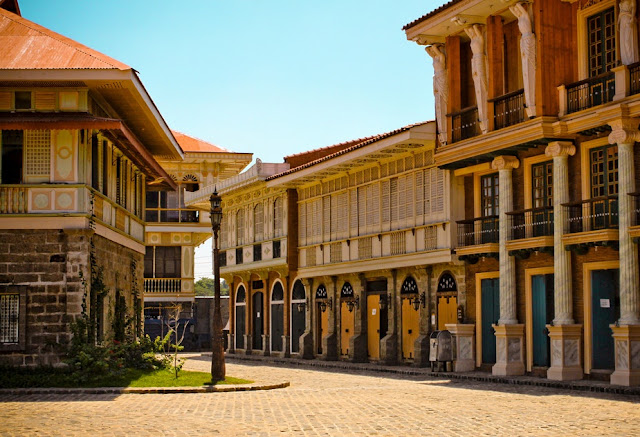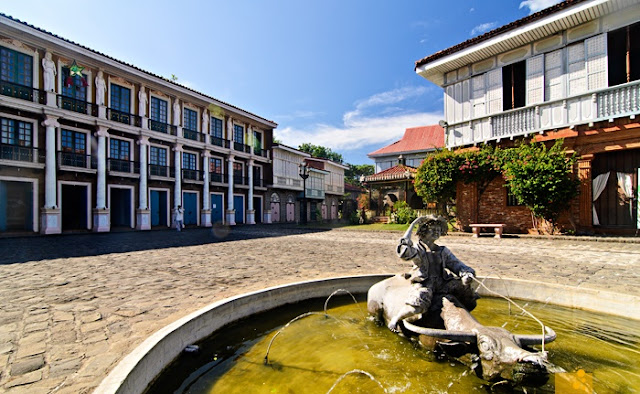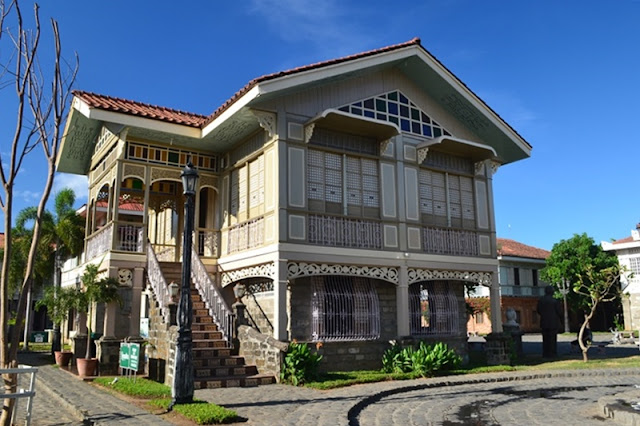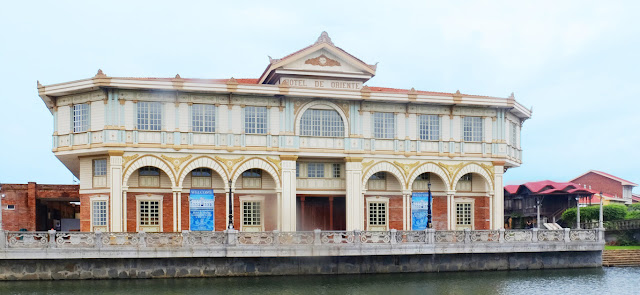Las Casas Filipinas de Acuzar is a museum and heritage park located in Bagac, Bataan, Philippines. Las Casas Filipinas is by the sea, along Umagol river, in Barangay Pag-asa, Bagac, Bataan.
Las Casas Filipinas de Acuzar is own by José "Gerry" Acuzar, started to rebuild Spanish colonial-era mansions in Bagac in 2003. In 2010, the heritage park was opened to public. Spread over 400 hectares, the park features a collection of 27 Spanish colonial-era buildings, with the entire site made to resemble a period settlement. The houses were chosen based on their historical, cultural and architectural value.
Each house was dismantled in situ brick by brick, numbered, transported to the Bagac site, where they were reassembled and restored. For parts that were missing, woodwork and bricks were replicated to resemble the original structure. The workforce of 130 people, including 10 wood sculptors, 3 metal sculptors, 30 craftsmen who design ceilings, and construction workers, five architects, 2 of whom are historical architects, and two artists.
Las Casas Filipinas de Acuzar contains 30 heritage houses.
Las Casas Filipinas de Acuzar is own by José "Gerry" Acuzar, started to rebuild Spanish colonial-era mansions in Bagac in 2003. In 2010, the heritage park was opened to public. Spread over 400 hectares, the park features a collection of 27 Spanish colonial-era buildings, with the entire site made to resemble a period settlement. The houses were chosen based on their historical, cultural and architectural value.
Each house was dismantled in situ brick by brick, numbered, transported to the Bagac site, where they were reassembled and restored. For parts that were missing, woodwork and bricks were replicated to resemble the original structure. The workforce of 130 people, including 10 wood sculptors, 3 metal sculptors, 30 craftsmen who design ceilings, and construction workers, five architects, 2 of whom are historical architects, and two artists.
Las Casas Filipinas de Acuzar contains 30 heritage houses.
- Casa Baliuag 1 - (built in 1898; owned by the Vergel de Dios family).
- Casa Baliuag 2 - originally in the compound of Iglesia ni Cristo in Baliuag. It was owned by a González.
- Casa Cagayan -a collection of four wooden houses built on stilts. Such houses were usually regarded as those of poor people in Cagayan in the early 1900s.
- Casa Candaba - (built in 1780, owned by the Reyes family)
- Casa Jaen 1 and 2 - Two houses from Jaen, Nueva Ecija, originally owned by the Esquivel clan. Casa Jaen 1, also known as the Don Hilario Esquivel House, was built in the 1900s and won the House Beautiful Award in 1917 by the Sunday Tribune.
- Casa Lubao - (built in 1920; owned by the Arastia and Vitug families)
- Casa Mexico - salvaged from a junk shop and reconstructed based on an old photograph.
- Casa Luna - (owned by the Novicio family) houses a museum. Built in 1850, its original location was in Namacpacan (now Luna, La Union).
- Casa Bizantina – (built in 1890) is a three-storey, intricately designed bahay na bato from Binondo, Manila.
- Casa Meycauayan - (built in 1913 by the Escota family) was built in the City of San Fernando in Pampanga.
- Casa Hidalgo - (built in 1867) was the first campus of the University of the Philippines’ School of Fine Arts, of which its owner Rafael Enríquez was the first director.
- Casa Biñan (Alberto House) - is a replica of the house of Teodora Alonzo.
Bagac Bataan
Bataan
Casas Filipinas
International Tourist
Las Casas Filipinas de Acuzar located at Bagac Bataan
Philippines
Tourist Destination
Tourist Guide





